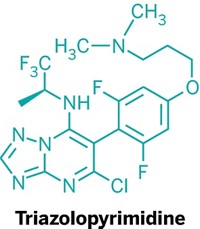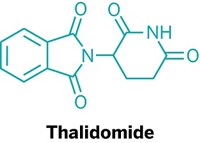Advertisement
Grab your lab coat. Let's get started
Welcome!
Welcome!
Create an account below to get 6 C&EN articles per month, receive newsletters and more - all free.
It seems this is your first time logging in online. Please enter the following information to continue.
As an ACS member you automatically get access to this site. All we need is few more details to create your reading experience.
Not you? Sign in with a different account.
Not you? Sign in with a different account.
ERROR 1
ERROR 1
ERROR 2
ERROR 2
ERROR 2
ERROR 2
ERROR 2
Password and Confirm password must match.
If you have an ACS member number, please enter it here so we can link this account to your membership. (optional)
ERROR 2
ACS values your privacy. By submitting your information, you are gaining access to C&EN and subscribing to our weekly newsletter. We use the information you provide to make your reading experience better, and we will never sell your data to third party members.
Pharmaceuticals
Drug Design Leads To Desired Enzyme Inhibitors
Non-bisphosphonate inhibitors of farnesyl pyrophosphate synthase could lead to cancer treatments
by Sarah Everts
August 16, 2010
| A version of this story appeared in
Volume 88, Issue 33
A research team at the Novartis Institutes for Biomedical Research, in Basel, Switzerland, has discovered the first potent non-bisphosphonate inhibitors of farnesyl pyrophosphate synthase (FPPS), an enzyme associated with osteoporosis and certain cancers (Nat. Chem. Biol., DOI: 10.1038/nchembio.421). Bisphosphonates are efficient at blocking FPPS activity and are popular drugs for treating osteoporosis and other bone diseases. For more than a decade, drug developers have longed to treat breast cancer and several infectious diseases by targeting FPPS with modified bisphosphonates. But the compounds’ high accumulation in bone cells hampers their ability to work elsewhere. In seeking a solution to this problem, Novartis’ Wolfgang Jahnke and colleagues turned to fragment-based drug design, a strategy that aims to create blockbuster drugs by identifying chunks of molecules or even mere functional groups that may bind only weakly to biological targets. The fragments are then expanded and optimized to make a drug lead with stronger affinity and promising pharmacokinetic characteristics. The non-bisphosphonate FPPS inhibitors that the Novartis team developed feature a benzyloxycarbonyl scaffold and allosterically block the enzyme by slipping into a previously unknown binding pocket.





Join the conversation
Contact the reporter
Submit a Letter to the Editor for publication
Engage with us on Twitter